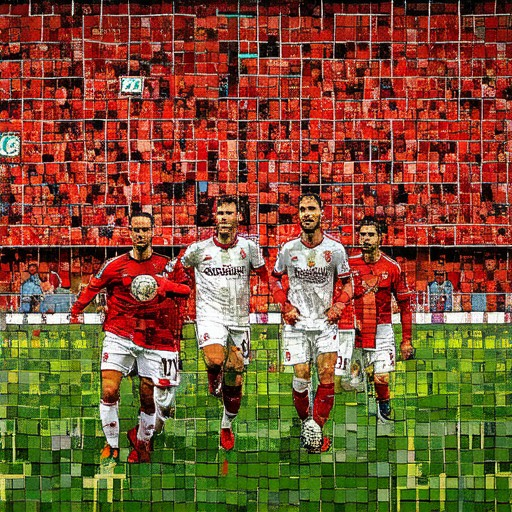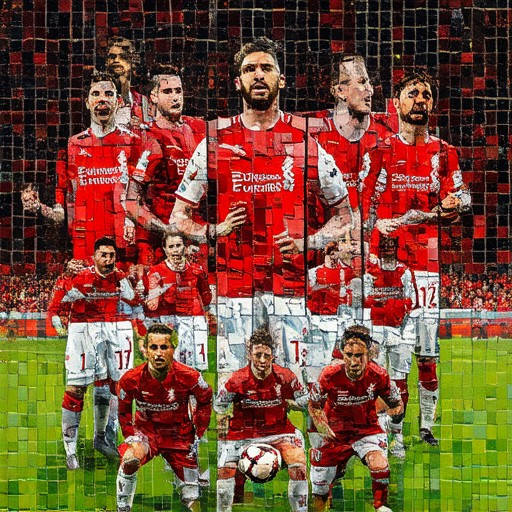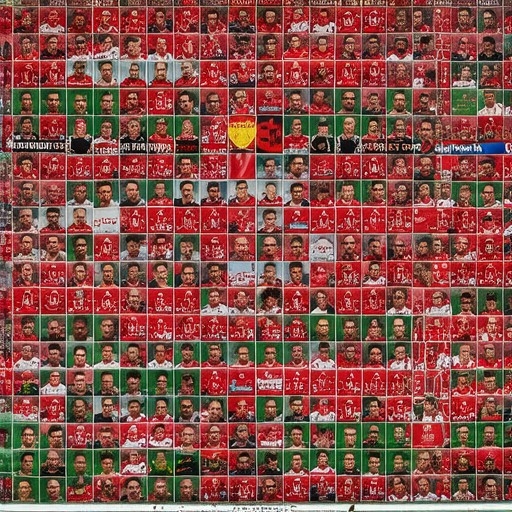Understanding Liverpool’s team formations is a cornerstone of exploring their footballing legacy and modern-day success. Over the years, Liverpool has consistently evolved their tactics, formations, and strategies, shaping their identity as one of the most successful clubs in football history. From the iconic 4-2-4 system to the innovative slot formation, Liverpool’s ability to adapt has been key to their dominance. This deep dive delves into the evolution of their formations, analyzing how each configuration has influenced their performances on the pitch. Whether it’s the current setup or historical variations, this exploration sheds light on the tactical masterminds behind Liverpool’s success and how their formations have reflected changing trends in football.

Formation of Liverpool FC
Liverpool Football Club typically employs a 4-2-2-1 formation, which is a hallmark of their playing style under manager Jürgen Klopp. This system emphasizes high pressing, aggressive man-marking, and quick transitions, often referred to as “high-intensity football.”
The 4-2-2-1 formation consists of:
- Four defenders: Full-backs and center-backs work together to cover space and provide a solid defensive base.
- Two midfielders: One sits deep to protect the backline, while the other is more attacking-oriented, joining the midfield pivot.
- Two attackers: They operate in advanced positions, often as wingers or central attackers, looking to exploit defensive gaps.
- One goalkeeper: The last line of defense, responsible for shot-stopping and distributing effectively.
This formation is characterized by its ability to quickly transition from defense to attack, utilizing the wings to overload the central area and create numerical superiority. The system requires excellent fitness levels due to the constant pressing and running required from all players.
Liverpool’s style of play has evolved significantly under Klopp, focusing on creating fast-paced, dynamic games that emphasize fluidity in attack and a robust defensive structure. Their approach has led to numerous titles and remains a benchmark in modern football.
For more detailed insights into Liverpool’s tactics and player performances, visit The Anfield Talk .
Teams That Utilize the 4-3-3 Formation
The 4-3-3 formation is widely adopted by numerous football clubs due to its flexibility and ability to adapt to different playing styles. Here are some prominent teams that frequently employ this system:
- Liverpool FC : Known for their high-intensity gameplay, Liverpool often uses the 4-3-3 to dominate possession and exploit quick counter-attacks.
- Real Madrid : This formation suits their dynamic attacking options, allowing them to maintain pressure and capitalize on set-pieces.
- Manchester City : Their vast array of talent benefits from the 4-3-3, enabling them to overload the midfield and control games effectively.
- Bayern Munich : A blend of youth and experience allows them to adapt the 4-3-3 system, focusing on pressing and quick transitions.
- Tottenham Hotspur : Their dynamic forwards and balanced midfielders make the 4-3-3 a perfect fit for their attacking style.
- Chelsea FC : The 4-3-3 provides stability in defense while allowing creativity in attack, aligning well with their midfield dominance.
- Arsenal FC : Young stars thrive in this system, enabling Arsenal to press high and exploit defensive gaps with swift counter-attacks.
- Borussia Dortmund : Their fast-paced gameplay and emphasis on wing play make the 4-3-3 formation ideal for their style.
- Paris Saint-Germain : The 4-3-3 accommodates their star power, allowing them to stretch defenses and create scoring opportunities.

Best Formation and Tactics for Liverpool
Liverpool FC, under manager Jürgen Klopp, has revolutionized their approach to football, adopting a dynamic and pressing style. The primary formation utilized is the 4-3-3 system, often referred to as the “geometric midblock” system, which emphasizes high pressing, quick transitions, and fluid attacking play.
Defensive Structure
- The defensive setup typically features a back-four, with center-backs Virgil van Dijk and Dejan Kulusevski providing stability and distribution ability.
- Full-backs Andrew Robertson and Trent Alexander-Arnold excel in overlapping and providing width, supporting the wing play.
- A high line of engagement ensures quick transitions, forcing opponents to play quickly and make mistakes under pressure.
Midfield Dynamics
- The midfield trio, often consisting of Fabinho, Thiago Alcântara, and Jordan Henderson, excels in pressing, intercepting, and controlling the tempo of the game.
- Fabinho’s versatility allows him to cover defensively while contributing offensively, while Henderson provides energy and leadership.
- Thiago Alcântara’s composure and vision enable him to pick apart defenses with precise passes, often leading to goals.
Forward Play
- The fluidity in the final third is a hallmark of Klopp’s system, with forwards like Sadio Mané, Mohamed Salah, and Roberto Firmino working interchangeably.
- Mané’s pace and dribbling ability allow him to exploit defensive gaps, while Salah’s clinical finishing and work rate make him a constant threat.
- Firmino’s intelligence and positional awareness help him drop deep to link defense and attack, creating scoring opportunities.
Key Tactics
- High Pressing: The entire team presses high up the field to disrupt opponents’ build-up play, forcing turnovers in dangerous positions.
- Quick Transitions: After regaining possession, Liverpool quickly transition from defense to attack, exploiting half-spaces and overlaps.
- Fluid Attacking System: The front three constantly move to create overlaps and stretch the opponent’s defense, creating numerical superiority in advanced areas.
- Set-Piece Expertise: Liverpool’s ability to deliver dangerous set-pieces, particularly from free-kicks and corners, adds a dimension to their attacking play.
By combining these elements, Liverpool creates a cohesive and dynamic attacking force, making them one of the most formidable teams in world football. Their ability to adapt and impose their style on games has made them a consistent contender at the highest level.

Slot Formation at Liverpool
Liverpool Football Club (LFC) has embraced the 4231 formation as its primary slot system, marking a departure from manager Jurgen Klopp’s traditional 4-3-3 setup. This formation emphasizes fluidity and adaptability, allowing for a dynamic attacking approach while maintaining defensive stability.
Understanding the 4231 Formation
The 4231 formation typically features three central midfielders, two wing-backs, and a lone striker. This configuration provides a balanced mix of creativity, work rate, and defensive cover, enabling Liverpool to dominate possession and transition effectively between defense and attack.
Difference from Previous Systems
While Klopp initially favored a 4-3-3 formation, the shift to 4231 reflects a strategic adjustment to accommodate Liverpool’s talent pool and tactical needs. The system allows for greater flexibility in positioning, particularly for forwards like Mohamed Salah and Sadio Mane, who thrive in advanced roles.
Impact on Team Style
Under this formation, Liverpool has adopted a more compact defensive block and faster transitions, leveraging the energy of their midfielders to exploit opponents’ vulnerabilities. The system also enhances communication and spatial awareness among players, fostering a cohesive unit.
Why Liverpool Chose 4231
Liverpool’s decision to adopt the 4231 formation is driven by the club’s philosophy of pressing high and controlling games. The system aligns perfectly with the club’s identity, enabling them to dictate play and capitalize on counter-attacks.
Evolving Slot Systems in Football
Football formations have evolved significantly over time, with the 4231 slot system representing a modern approach to tactical flexibility. Liverpool’s adoption underscores the importance of adapting to player capabilities and opposition styles.
In summary, Liverpool’s 4231 formation is a strategic choice that maximizes their strengths while addressing contemporary demands of the game. This system has proven instrumental in their recent success, blending creativity with defensive discipline to achieve exceptional results on the pitch.
What is the 4-2-4 Formation?
The 4-2-4 formation is a popular soccer (football) tactic that balances defense and attack. Here’s a breakdown:
- Defense : Four players typically consist of two center-backs and two full-backs. The full-backs often stay wide to cover the wings, providing a solid defensive base.
- Midfield : Two midfielders usually operate in a double pivot, focusing on breaking up plays and initiating attacks. Their role is crucial for controlling the tempo of the game.
- Attack : Four players, often including two forwards and a winger, aim to overload the midfield and stretch the defense. The winger may drop back to support in attacking phases, adding flexibility.
This formation offers defensive stability with four defenders and provides attacking options through the four attackers. It requires coordination and discipline, especially in transitions and set-pieces, to maximize effectiveness.

The Liverpool Shuffle
The Liverpool Shuffle is a term often used to describe a style of performing Beatles music that emphasizes live performance and authenticity. This style typically involves musicians recreating the sound and feel of the Beatles’ original recordings without the use of pre-recorded tracks or excessive production techniques. The focus is on delivering a live Beatles show that stays true to the spirit of the era.
This type of performance is characterized by close harmonies, precise instrumentation, and a commitment to capturing the energy and emotion of the Beatles’ songs. Unlike some Beatles tributes that rely on studio-quality recordings, the Liverpool Shuffle prioritizes a raw, engaging experience that connects directly with the audience.
How the Liverpool Shuffle Differs
One key aspect of the Liverpool Shuffle is its emphasis on live instrumentation. Performances often feature guitar, bass, drums, and vocals, played in a way that mimics the Beatles’ recording sessions. This approach ensures that the music remains timeless and relatable to fans of all generations.
Another defining feature is the attention to detail in replicating the Beatles’ signature sound. From the intricate vocal arrangements to the subtle nuances in guitar playing, the Liverpool Shuffle aims to recreate the essence of the band’s music as accurately as possible.
Why It’s Special
The Liverpool Shuffle stands out because it doesn’t try to imitate the Beatles perfectly, but rather captures the soul of their music. This approach allows for creative interpretation while staying faithful to the original recordings.
Performances often highlight the Beatles’ ability to innovate and experiment with their sound. This innovation is reflected in the Liverpool Shuffle, which balances tradition with fresh interpretations that keep the music feeling vibrant and relevant today.
A Conclusion
In summary, the Liverpool Shuffle is a celebration of Beatles music that prioritizes live performance and authenticity. It offers audiences a chance to experience the magic of the Beatles’ songs in a way that feels both familiar and fresh. Whether you’re a long-time fan or new to the Beatles’ music, the Liverpool Shuffle provides an unforgettable journey through one of the most influential catalogs in popular music history.




0 Comments